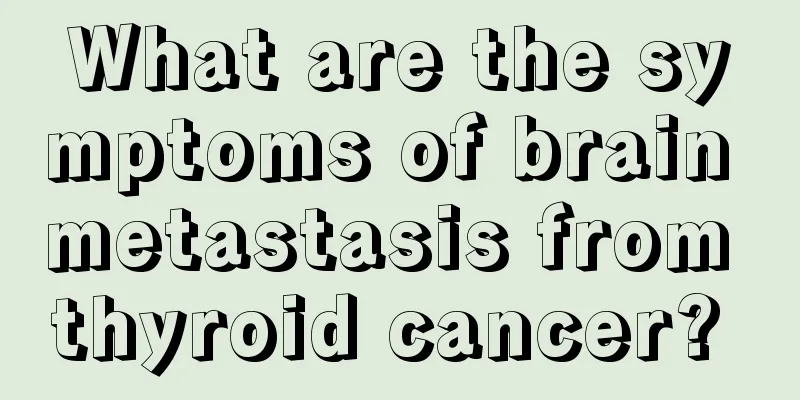How do we identify prostate cancer?

|
Because prostate cancer occurs in many stages, many symptoms at different stages are easily confused with other diseases, increasing the difficulty of identification. So below we will introduce to you how to identify prostate cancer. Let’s learn about it together. 1. It should be differentiated from prostate hyperplasia: The two are generally easy to distinguish. However, in the hyperplastic prostate glands, the epithelial cells in some areas are atypical in morphology and can be mistaken for cancer. The key points of differentiation are: the alveoli in the hyperplastic glands are larger, the surrounding collagen fiber layer is intact, the epithelium is double-layered and high-columnar, the cell nucleus is smaller than that of prostate cancer patients and is located at the base of the cell, and the glands are arranged regularly to form obvious nodules. 2. Differentiation from prostate atrophy: Prostate cancer often starts from the atrophic part of the gland, so it should be carefully differentiated. Atrophic alveoli are sometimes tightly clustered, atrophic and smaller, and the epithelial cells are cubic with large nuclei, which is very similar to cancer. However, this type of atrophy often involves the entire lobule, the collagen connective tissue layer is still intact, the matrix is not invaded, but it itself is sclerotic and atrophic. 3. Differentiation from prostate squamous epithelium or transitional epithelium metaplasia: It often occurs in the healing part of the infarct area within the gland, and the squamous epithelium or transitional epithelium is well differentiated without degeneration or splitting. The most prominent feature of metaplasia is ischemic necrosis or fibrous connective tissue matrix lacking smooth muscle. 4. Granulomatous prostatitis: The cells are large and can aggregate into sheets. They have transparent or light red stained cytoplasm and small vesicular nuclei, which look like prostate cancer, but they are actually macrophages. Another type of cells are polymorphic, with condensed nuclei, vacuolated, small in size, arranged in rows or clusters, and sometimes some acini can be seen. When distinguishing, it should be noted that granulomatous prostatitis rarely forms acini, and the relationship between the lesions and normal glandular ducts remains unchanged. Degenerative amyloid bodies and multinucleated giant cells are often seen. The cells of prostate cancer are low columnar or cubic, with clear cell walls, dense eosinophilic cytoplasm, larger nuclei than normal, and there may be variations in staining and morphology, and the division is not active. Its acini are smaller, lack of tortuosity, and the normal arrangement morphology is completely lost. They infiltrate the matrix irregularly, and the collagen connective tissue layer no longer exists. 5. In addition, prostate cancer should be differentiated from prostate tuberculosis and prostate stones. See the relevant section for details. Prostate cancer at different stages needs to be distinguished from different diseases, and there are many diseases that are easily confused, so we must distinguish them clearly. The best way to identify prostate cancer is to go to the hospital for a confirmed diagnosis, so that you can feel more at ease and it will also be convenient for future treatment. |
>>: What are the symptoms of prostate cancer liver metastasis
Recommend
Is it still possible to keep the baby after one year of caesarean section?
Regardless of whether it is a natural birth or a ...
Why does my heart beat faster after drinking alcohol?
Many people always talk about things over a drink...
How often should I have a checkup after chemotherapy for gastric cancer
How often should I be examined after chemotherapy...
What is the mid-term cure rate of cervical cancer
Many women are afraid of contracting some cancers...
Experts tell you how brain metastasis of lung cancer occurs
Most lung cancer patients are already in the adva...
About the life of prostitutes in Japan
The scholar said: "Is there a fact of buying...
What kind of people are prone to liver cancer
What kind of people are prone to liver cancer? 1....
This symptom may be caused by lumbar disc bulging
Lumbar disc bulging is a common lumbar spinal dis...
Clinical manifestations of primary liver cancer
Primary liver cancer is insidious, with no typica...
What are the postoperative complications of pituitary tumors?
Most pituitary tumors are benign tumors of the pi...
The efficacy and function of red radish
Red radish is very common. Many families in rural...
What are the benefits of hot compress on belly button
Hot compress therapy is one of the more common me...
What should I do if I have cracks at the corners of my mouth?
If you have cracks at the corners of your mouth, ...
My legs and knees ache
Knee pain is a common phenomenon in life, especia...
What is the difference between walnuts for ornamental purposes and walnuts for eating?
Speaking of walnuts, everyone should be familiar ...









